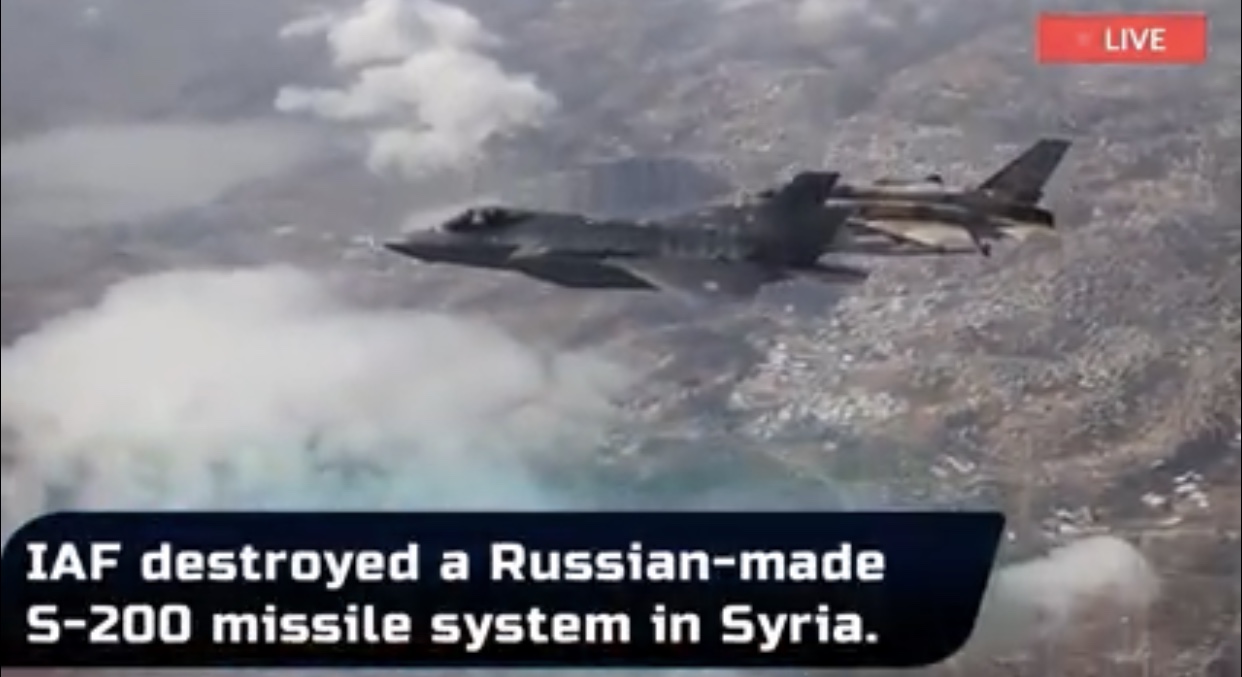The Israeli air force has destroyed a battery of a Russian-made S-200 missile system, which is in service with the Syrian Arab Army, learned BulgarianMilitary.com, citing the Israeli online agency The Times of Israel.
As BulgarianMilitary.com reported yesterday, early in the morning at 01:26 the Israeli air force carried out airstrikes on pro-Iranian targets in the area of Damascus. Israel has no practice of commenting on such hostilities. Thus, Tel Aviv is not required to confirm or deny such information. But with the news, Israeli aces have destroyed the Syrian air defense battery, de facto confirming the truth of the information disseminated by the Syrian state news agency SANA.
Sources from The Times of Israel claim that the IAF destroyed exactly this air defense system, which fired the missile that fell on the territory of Israel yesterday. As reported, explosions were heard near Tel Aviv.
BulgarianMilitary.com reminds you that the Israeli Iron Dome air defense system is activated only if its mathematical algorithm calculates where the trajectory of the enemy missile leads. If it is assumed, it will fall in a field or the sea – Iron Dome is not activated, as was the case yesterday.
Israel claims that the missile fired by the Syrian S-200 system is not a deliberate act of attack, but an attempt by the Syrians to intercept a missile fired by an Israeli fighter jet. As the interception was unsuccessful, the Syrian missile crashed into the Mediterranean. On the morning of September 3, Israeli citizens reported finding the remains of a Syrian missile.
The civil war in Syria
The Syrian civil war has been going on for almost a decade. Attempts by movements such as the Syrian Democratic Forces to overthrow Syrian President Bashar al-Assad have failed.
The Syrian democratic forces are armed by allies and the United States, while the Syrian army is armed mainly by Russia. Russia is the only country officially invited to Syria by President Bashar al-Assad.
In 2017, the United States launched a massive missile strike on Bashar al-Assad’s forces after a report emerged that the Syrian president had used chemical weapons to attack his people in the country. Syria and Russia deny such actions.
During his tenure, US President Donald Trump decided to withdraw much of US troops from Syria, leaving several troops to guard Syria’s oil fields on the pretext of “falling into the hands of Islamic State.”
With the withdrawal of the United States, Turkey comes to the fore, declaring it necessary to deal with the Kurds and the PKK movement in the northern part of the country, which borders Turkey. That is why Erdogan is sending troops in an attempt to build a stable and secure 30km zone between Syria and Turkey, which will prevent future terrorist attacks on Turkish territory, as it is.
Ceasefire
In February 2020, Turkey lost at least 62 troops killed in Syria. Nearly 100 soldiers were wounded, Syrian-backed forces destroyed dozens of Turkish armored vehicles, and more than ten drones, including drones, were shot down. Washington has repeatedly accused Moscow of involvement in the deaths of Turkish soldiers, Russia rejects these allegations.
In early March 2020, the presidents of Russia and Turkey, Vladimir Putin and Recep Tayyip Erdogan, agreed that a ceasefire came into force in the Idlib de-escalation zone. Syrian President Bashar al-Assad later said that if the US and Turkish military did not leave the country, Damascus would use military power.
The reason for the Russian-Turkish negotiations was a sharp aggravation of the situation in Idlib, where in January, a large-scale offensive by the Syrian army against the positions of the armed opposition and terrorists began.
Government forces recaptured nearly half of the Idlib de-escalation zone and left behind several Turkish observation posts. After that, Ankara sharply increased its military contingent in the region and launched the operation “Spring Shield” to push the Syrian troops. Militants are loyal to Ankara and support Turkey.
Israeli-Iranian proxy war / cold war
Communication between Israel and Iran is mostly threatening and hostile. Such has been the relationship between the two countries for a very long time. This situation is known as the proxy conflict, the proxy war, or the Cold War between the two countries.
The conflict “appeared” on the world map after the Iranian revolution in 1979. In all the years to this day, Iran aims to destroy Israel as a state. Tehran supports groups and organizations that are hostile to the Jewish state and people. On the other hand, Israel is worried about Iran’sIran’s nuclear program. The proximity of the two countries worries Tel Aviv that Iranians could use them against Israel if Iran has nuclear weapons. Israel also finds its allies in the face of the United States and Saudi Arabia, which are apparent opponents of Iran.
Thus, this conflict gradually turned into an Israeli-Iranian war. The competition has been going on since the start of the Syrian civil war. According to Iran, Israel rules by an illegitimate “Zionist regime,” a Tehran problem. Iran’sIran’s other point of reference is that the United States is hostile to Muslims because it supports Israel.
Credit: BulgarianMilitary












Leave a Reply